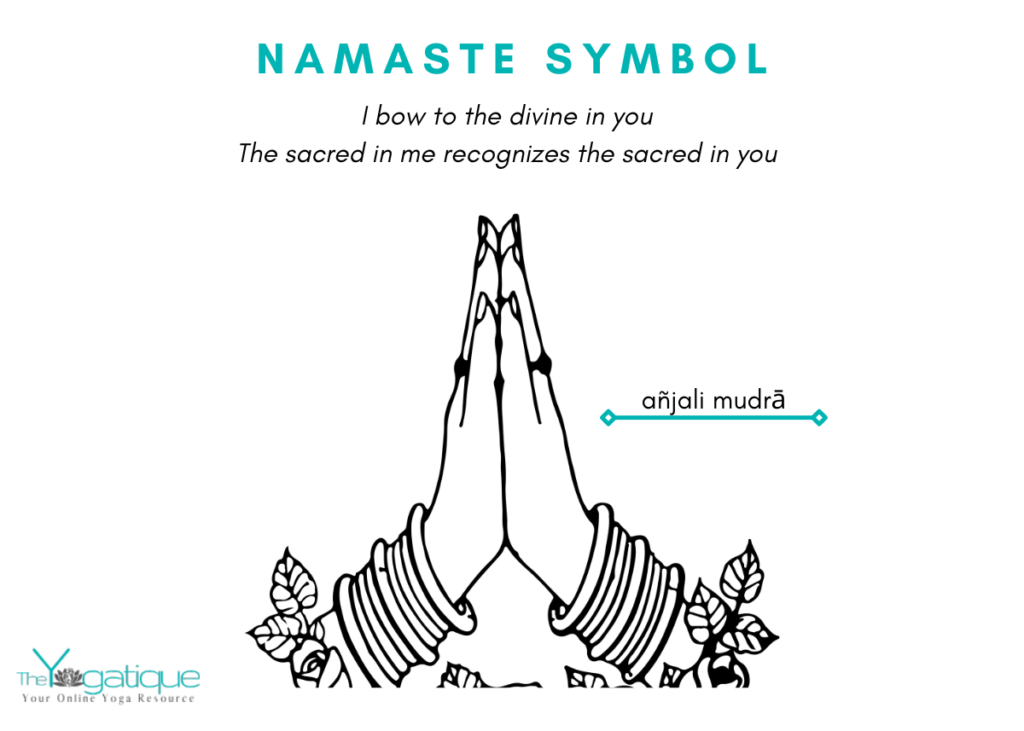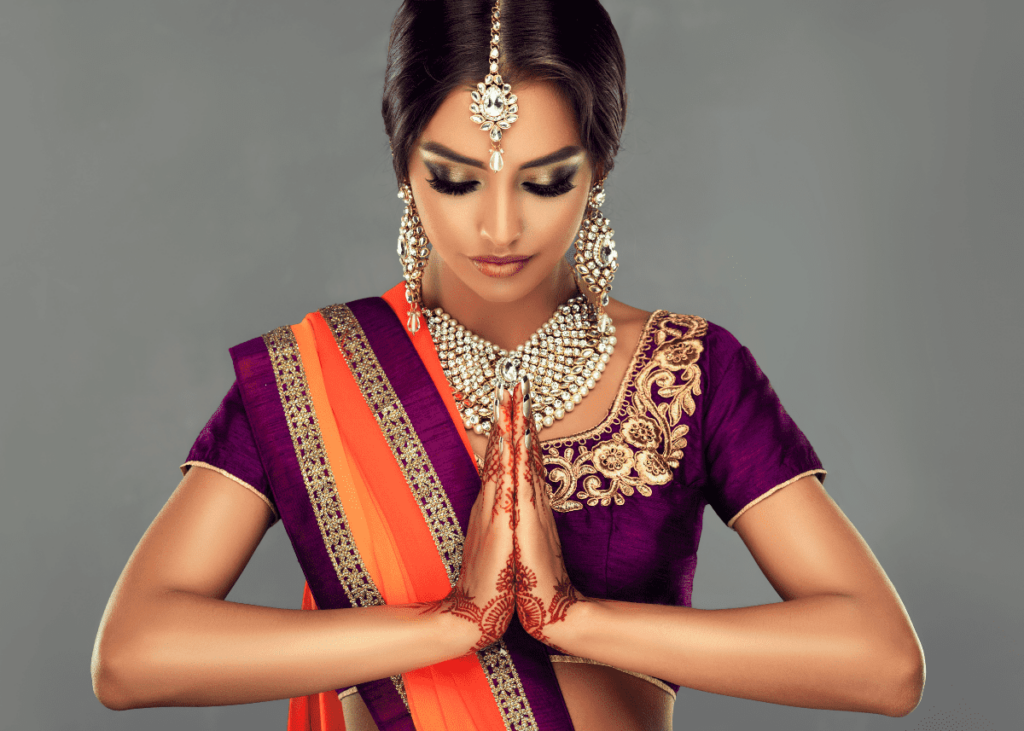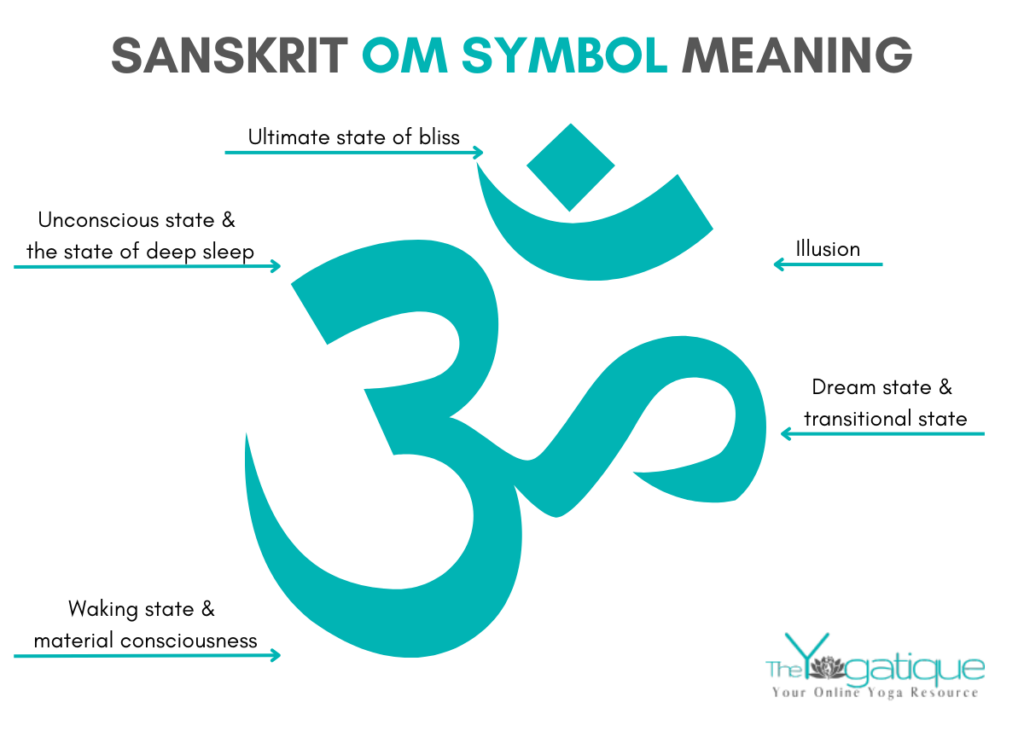The namaste symbol is an ancient Sanskrit salutation or greeting that has great spiritual meaning. The Namaste symbol of hands in prayer placed at the head or heart level symbolizes our acknowledgment of the Divine light and spirit within all beings, ourselves included. With this recognition of our commonality with one another, we can then realize our connected nature and that we are actually much more alike than we are different at our core.
Article content:
(Click any link below to jump directly to section)

IS YOGA TEACHER TRAINING ON YOUR RADAR?
Online Yoga Teacher Training Offers
- Affordability
- Flexibility
- Certification
- Lifetime access
⬇Click below to explore the best online yoga teacher training certification courses to join now⬇
Namaste symbol meaning
The essence of the Namaste symbol of bowing in honor to others is part of a bigger philosophy about living in gratitude and appreciation for everyone with whom we share this Earth.

If we begin to greet others from the heart chakra as Divine beings and spirits, first and foremost, we realize that we are offering to others the best versions of ourselves at that moment. And as humans, what more can we ask for? The direct correlation between happiness and acceptance cannot be understated.

Namaste is a deep form of respect, and even the simple act of putting everything on pause for just a moment to recognize another being's true spirit invokes feelings of calmness and humility.
The Namaste gesture aka Namaskar & Anjali Mudra
The Namaste gesture is a mudra known as Namaskar or Anjali Mudra and begins with hands in prayer at the heart chakra level or the crown chakra level directly in front of the third eye. From there, a slow bow with eyes closed communicates the symbolic nature of Namaste.
One of the online yoga classes that we reviewed, Do You Yoga, also wrote a great piece about what the Namaste symbol actually means, further elaborating on the Namaste gesture itself, writing that by bringing the hands together in front of the heart, you are unifying your physical body and your brain.
The Namaste symbol in yoga
According to an article in Yoga Journal about the meaning of Namaste written by Aadil Palkhivala, who is an expert on the topic of Chakras, by placing the hands in prayer at the heart chakra, the flow of Divine love increases while closing the eyes and bowing the head surrenders the mind to the Divine heart.
You will find that even when taking online yoga classes, many teachers will begin or end the class with Namaste.
Even if you're practicing alone and end your yoga session by bowing and saying Namaste, you are still putting that vibration out to the world. And also, importantly, you're taking a moment to recognize the divine being within yourself, which we so often forget to do.
Learning about yogic symbols is a great way to approach self-study and to spur the mind into further explorations of the philosophies and principles of yoga.

The meaning of the Om symbol

The Om symbol is a popular symbol you have likely seen adorning bodies, tapestries, walls, tee-shirts, you name it, and it is another symbol with deep meaning behind it.
If you are a yogi, you've also definitely heard the song of Om or, auuuummmm, before. For new yogis singing aloud in class might seem uncomfortable, but as soon as you join the choir, you will feel the oneness as the vibration takes over the room.
Yogi Weekly's article about Namaste and the Om symbol dives into the Om symbol, pronounced “aum” writing that the “A” “ahhh” sound represents the waking state, the “O” “ohhh” sound represents the dream state, and the “M” or “mmm” represents the deep sleep state.
If you have been feeling curious about the Namaste symbol, I hope this satisfies some of your curiosity, and you are inspired to incorporate Namaste into your greetings and salutations.
Namaste.

Online yoga classes are THE best way to keep your yoga practice consistent!
- Thousands of classes
- World's best instructors
- Fraction of the cost
- Train on your own time
⬇Explore the best online yoga classes below ⬇
FAQ about namaste
What does namaste mean in English?
In English, namaste means I bow to you or bowing to you. Namaste is a way to convey respect, acknowledgment, love (in a non-romantic way), among other things. While you don't need to necessarily bow, bowing your head to your hands is the polite way to greet someone in namaste fashion.
How do you respond when someone says namaste?
You can simply respond to namaste by saying namaste back in return. You could also say namo or namah, which is another Sanskrit word that translates to “with utmost respect, honor, and admiration.”
Some online yoga studios, online yoga teacher training programs, and brands that we write about may offer us a small commission should you decide to make a purchase or signup after reading our content. Thank you for enabling us to exist!








